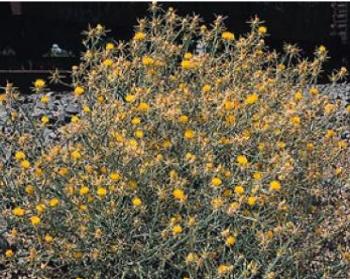Forest Plants
Vulnerable plants:
Although extinction is a natural process, the current rate of plant extinction around the world is one thousand times that which occurred before humans began to exert large-scale pressure on the world’s ecosystems. The major cause is habitat loss. Landowners with vulnerable plants on their property, or potential habitat for those species have a special opportunity and responsibility to safeguard unique species. Each species has its own unique needs and so requires its own specialized management approach. Typical management techniques may include removing invasive non-native plants, excluding herbivores, restoring drainage patterns to an area, rerouting trails, changing the timing of livestock grazing, conducting prescribed burns and other actions. For more information on conserving vulnerable plant species, please see Forest Stewardship Series 13 - Threatened and Endangered Plants

Exotic or non-native plants become pest plants when they aggressively invade natural ecosystems. Pest plants possess traits that help them outcompete natives such as abundant reproduction through easily dispersed seed or vegetative means, ability to quickly dominate disturbed sites, and rapid growth. Exotic pest plants can drastically alter basic ecological processes such as fire regimes, nitrogen fixation, aquatic conditions to the detriment of native species. They may provide poor habitat for wildlife and livestock than their dispaced native counterparts and contributed to the decline of endangered plants. They also create large economic losses for agriculture by reducing livestock forage production. Major pest plants in California include brooms (including French, Scotch, Portuguese, and Spanish) gorse, and yellow starthistle and cape ivy in coastal watersheds. On forest lands, tree of heaven, eucalyptus, pampas grass are commonly found while wet areas tamarisk, purple loosestrife, and giant reed are widespread. Prevention is the most effective and least costly way to avoid pest plant problems. Some common sense preventive precautions include minimizing soil disturbance and re-establish vegetation quickly, buying construction material from weed free suppliers, inspecting the property to detect new weed populations while they are still small which is the only case in which eradication is practical and effective. For an overview on detection and management of pest plants, please see Forest Stewardship Series 14 – Exotic Pest Plants.
More University of California Resources:
Weeds of California and other western states. 2 volumes. (order)
Integrated Pest Management Guidelines: Weeds UC IPM Web site
More Resources:
Landowners can undertake research to develop a list of species potentially occurring on their property by consulting the California Department of Fish and Game’s Natural Diversity Database.
The California Native Plant Society publishes and maintains the Inventory of Rare and Endangered Vascular Plants of California.
The California Invasive Plant Council (Cal-IPC) works to protect California's lands and waters from ecologically-damaging invasive plants through science, education and policy by working with agencies, industry and other nonprofit organizations to support research, restoration work, and public education.To identify the closest California Weed Management Area, consult the California Invasive Plant Council website.
USDA Natural Resources Conservation Service (NRCS) PLANTS database website.
